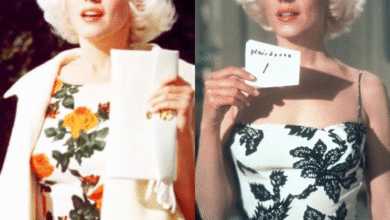The Darkest Four Days of Marilyn Monroe’s Life: Locked Away and Forgotten
OPINION: This article may contain commentary which reflects the author's opinion.
Marilyn Monroe—Hollywood’s shimmering icon—was no stranger to the pressures of fame, but behind the glamorous veneer lay a woman battling profound personal demons. In 1961, during one of the most turbulent periods of her life, Monroe endured an ordeal so harrowing it remains one of the darkest chapters of her story.
Following the emotional upheaval of her divorce from playwright Arthur Miller and the disappointing reception of her film The Misfits, Monroe’s mental health deteriorated. Encouraged by her psychoanalyst to seek respite, she agreed to enter what she believed would be a “rest cure” at the Payne Whitney Psychiatric Clinic in New York. Under the alias “Faye Miller” to protect her privacy, Monroe entered the clinic expecting sanctuary—but found anything but.
Instead of comfort, Monroe was plunged into isolation. Placed in a padded cell, she was cut off from the world, stripped of her personal belongings and medication. The cold, unforgiving environment was marked by the sight of other patients in desperate states, walls stained with signs of violence, and an overwhelming sense of dehumanization. For a woman already battling her own fragility, this was a crushing blow.
Her stay, lasting between three and four days, became a nightmare. Withdrawal symptoms gnawed at her without the support of her medication. Desperation drove her to slam a chair against the glass of her cell, an act meant to signal her distress. Instead of receiving help, Monroe was further punished—her actions interpreted as madness, leading to increased isolation and even threats of confinement in a straitjacket.
After enduring this brutal treatment, Monroe penned a poignant six-page letter to her psychiatrist, Dr. Ralph Greenson. She described the clinic as “inhuman” and “archaic,” laying bare the raw pain and alienation she experienced. Her words reflected not only trauma but remarkable strength—a refusal to be silenced despite the demeaning circumstances.
In a pivotal turn, Monroe’s ex-husband Joe DiMaggio intervened upon learning of her plight. His swift action led to her transfer to Columbia Presbyterian Medical Centre, where she finally received compassionate care. DiMaggio’s support, even after their separation, underscored the complexity of their bond and was crucial in saving her from further harm.
This grim episode at Payne Whitney marked a turning point in Monroe’s life, shedding light on the harsh realities faced by those struggling with mental illness, particularly in an era rife with misunderstanding and stigma. The trauma she endured there likely deepened the vulnerability that shadowed her until her untimely death.
Yet, Monroe’s courage in sharing her experience has left a lasting legacy. Her story is a stark reminder that fame does not shield one from mental health struggles and that behind the brightest stars can lie the darkest battles. By speaking out, Monroe helped pave the way for greater empathy and awareness surrounding mental illness—a fight that continues today.
Marilyn Monroe’s spirit remains indomitable: fiercely independent, deeply empathetic, and full of heart. Even in her darkest hours, she illuminated a path toward dignity and understanding, inspiring generations to seek compassion in the face of suffering.



